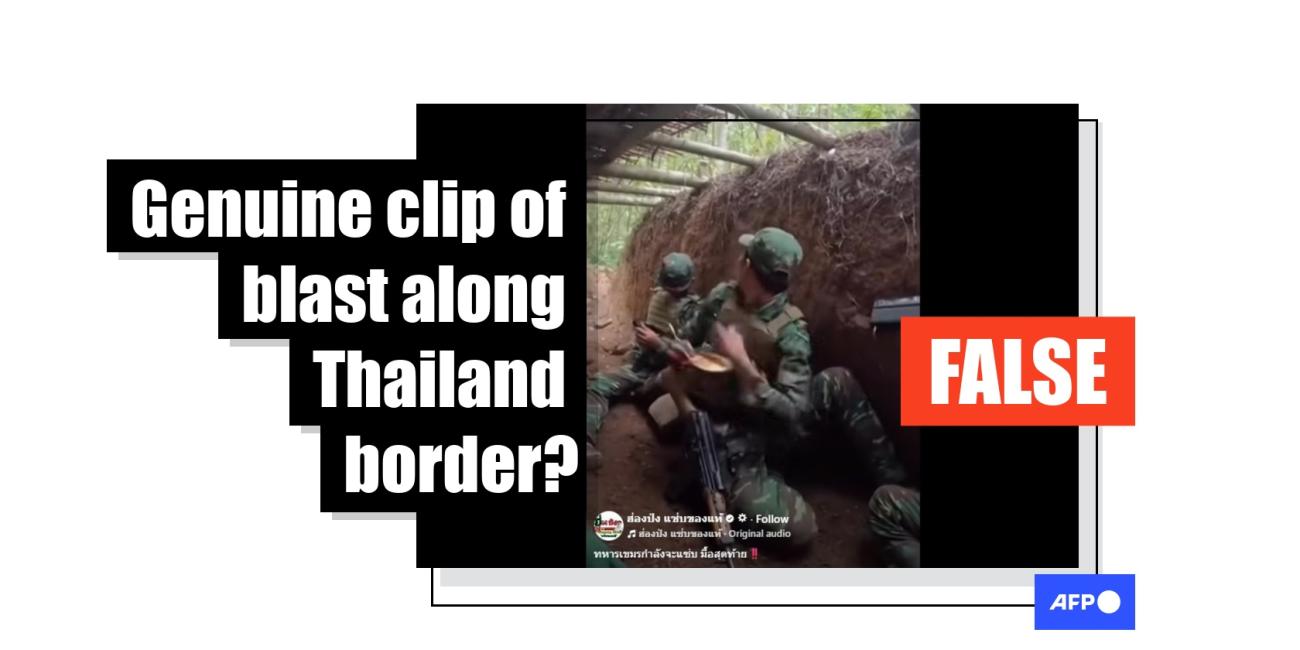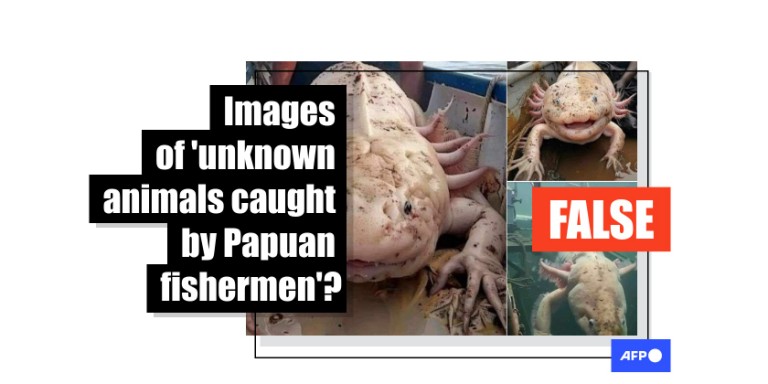
AI-generated images passed off as 'unknown creatures caught by Papuan fishermen'
- This article is more than one year old.
- Published on September 18, 2024 at 09:36
- 2 min read
- By Pasika KHERNAMNUOY, AFP Thailand
"Papuan fishermen have caught animals that were never seen before," read a Thai-language Facebook post shared on August 4.
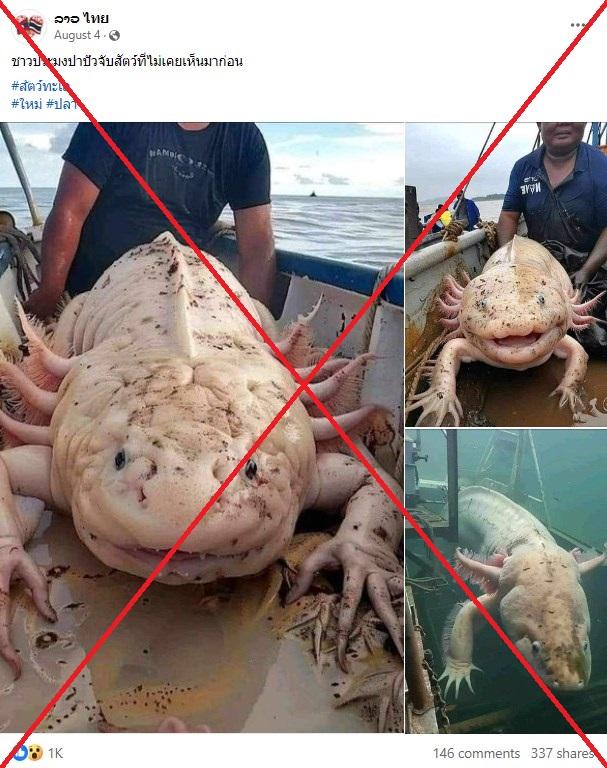
The post -- which was shared by a Facebook page with more than 268,000 followers -- showed three images of a creature that looked like an enormous axolotl as big as an actual human being.
These images have been shared alongside similar claims in several languages including English, Indonesian, Vietnamese, and Turkish.
But the images were in fact first uploaded to social media by an account that specialises in AI-generated content.
AI page
Reverse image searches on Google found the images were first shared in a Facebook post on July 23, 2024 with an "AI info" label used by Meta to identify content generated with AI (archived links here and here).
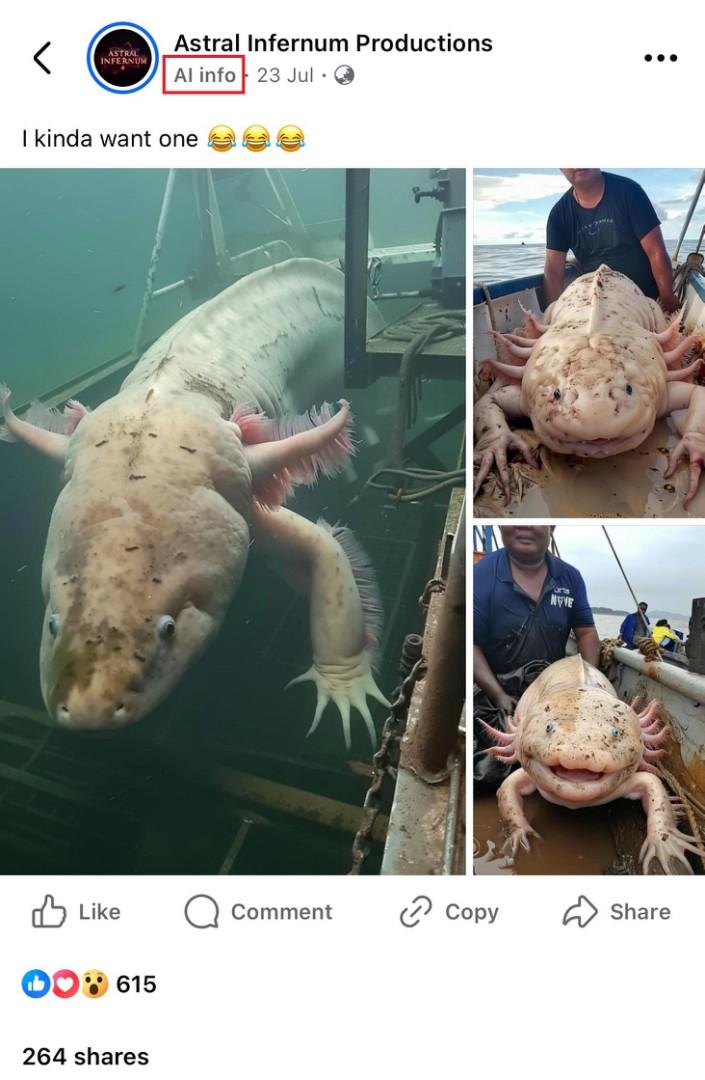
The profile where it was uploaded -- called Astral Infernum Productions -- identified itself as an "AI-assisted animator" which creates fan art with "a combination of AI, Sketches and Photoshop" (archived link).
The profile's owner has also responded to some of the comments on the picture by saying it is "an AI page" and that they would start to "watermark their work from now on" after being informed that the images were being shared with a false narrative.
A video showing the same scenes with the axolotls has also been shared on the same Facebook page, as well as on a YouTube account with the same name on August 4 (archived links here and here).
Visual inconsistencies
Shu Hu, head of Purdue University's Purdue Machine Learning and Media Forensics Lab in the United States, told AFP that the images contained obvious signs of AI (archived link).
"It is clear that all images are fake," he told AFP on September 10.
He pointed out visual inconsistencies in the images such as the creature's toes and legs looking very similar to human fingers and arms, as well as having a different number of toes on both sides, asymmetric gills, and a missing leg.
Below is a screenshot of the images with visual inconsistencies highlighted by AFP:
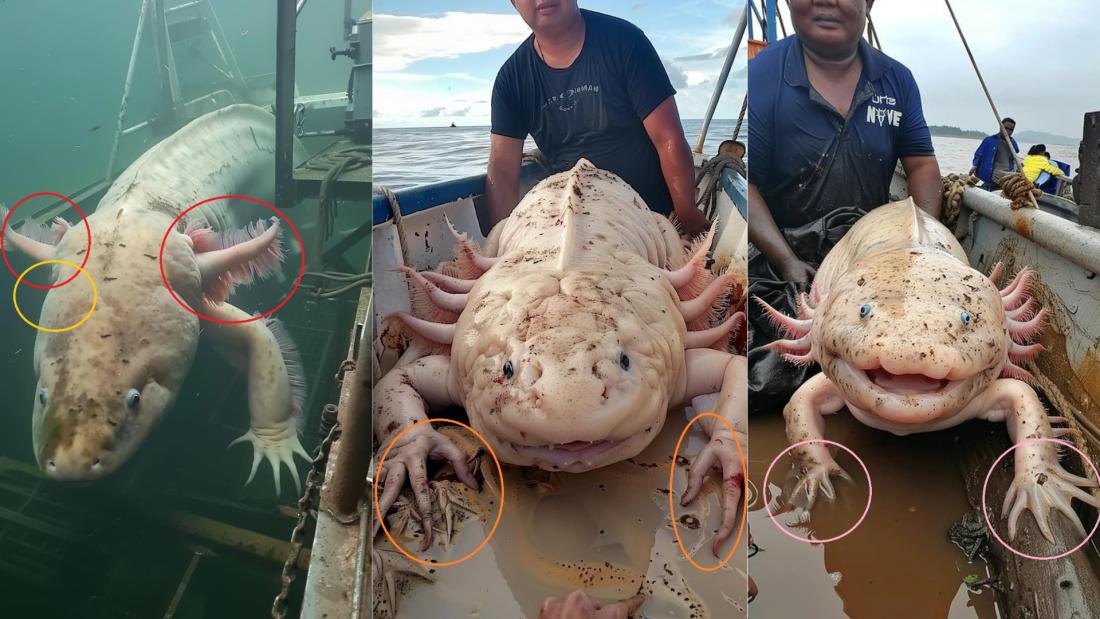
Even though the claims didn't specify what they mean by "Papua", which could refer to the country of Papua New Guinea or the Indonesian state, axolotls are native to none of those.
These amphibians -- which could grow to a foot long -- are actually found in the lakes and canals in southern Mexico, where they are classified as critically endangered species (archived link).
AFP has previously debunked AI-generated images of animals passed off as genuine photos, including a giant octopus and lobster.
Copyright © AFP 2017-2025. Any commercial use of this content requires a subscription. Click here to find out more.
Is there content that you would like AFP to fact-check? Get in touch.
Contact us
